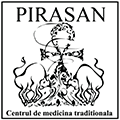Five thousands years ago, a medical system with undeniable results and efficiency developed in Tibet. The methods and techniques of the therapists of the age brought a major contribution to the therapy system; they differentiated from the traditional methods of other cultures by certain particular features. In the treatment of diseases and to recover the body balance, the Tibetans used the following:
- Extracts of precious stones, of stalactites and stalagmites (the substances resulted from the dissolution of various rocks into water). Taking into account that these stone have built up there for thousands of years, they are harvested and milled into powder; after that they are mixed with components of other substances, for various affections ;
- Extract of various types of stones, milled and prepared in the same way;
- Extract of various earths;
- Extracts of various types of wood;
- Extracts of herbs grown in the garden;
- Herbal extracts;
- Salt extracts;
- Animal extracts;
- Sea extracts;
- Cereal extracts;
- Live water extracts;
- Lava extracts;
The Tibetans also perform treatments for the recovery of the emotional balance in the cases of anxiety and agitation. Such disorders occur when the energy channels of the body no longer function properly and the energies from various channels have fused together. In this situation, the energies must be rebalanced. How will it be done? – By applying the principle according to which there is a connection between fingers, natural elements and organs:
- To the thumb correspond wood and wind; liver and gall bladder.
- To the index finger correspond fire and embers; heart and intestines.
- To the middle finger correspond earth and dampness; pancreas, spleen and stomach.
- To the ring finger correspond metal and draught; lungs and intestines.
- To the little finger correspond water and cold; kidney, urinary bladder and prostate.
In the Tibetan therapeutical practices, they insert the needles in the palms in order to treat the disorders and to restore the balance of the body. Beside that, the Tibetans use one more method with similar effects: the fingers are brought together and sounds are made in a certain rhythm that restores the energy of the body primarily. These procedures must be performed under the supervision of a specialist who masters them and does them properly.
For instance: if you feel fear, you press your little finger to the center of your palm; upon it you press your middle finger and your thumb. In this case we get the sounds of earth – HU, the sound of cold and frost – UI, and the sound of wood – SEI. If the position is maintained for 5 minutes, the feel of fear will vanish.
If you feel sadness, you press your ring finger towards the center of your palm and press it with your index finger and your thumb. In the same way you get the sound of metal – SI and the sound of wind – SUI. This will make sadness vanish.
If you are alarmed and worried, press your middle finger towards the center of your palm and press it with your thumb. In this way you get the sound of wind – SUI and the sound of dampness – HUL.
In case of excessive nervousness, you press your thumb towards the center of your palm upon your ring finger, which will make the sound of metal – SI and the sound of wind – SUI.
In case of excessive euphoria you press your thumb towards the center of your palm with your ring finger and your little finger – you get the sound of cold – UI – and the sound of wind – SUI.
Obviously, you must practice the techniques described for a long time before you manage to balance the energies and before the effects become visible. The treatments of traditional medicine act holistically upon the body that is regarded as a unit of energy and organic systems. Therefore the therapies and the treatment techniques must be equally complex and exhaustive, and they must be performed at a proper level for the results to be noticeable.
A major factor in the recovery process is the patient himself who must see the benefits and advantages of traditional medicine; be involved in the recovery process as active participant and be willing to get cured – taking into account that he is fighting an affection – in order to be able to return and help his family. The dialogue between physician and patient must include the description of the affection the latter one is fighting; the patient must be assured that he can be treated and that he can recover. From this point on, the patient can work upon his own mind or by self suggestion.
Both patient and physician must not use negations like: NO, I CANNOT, I DO NOT WANT, IT IS NOT POSSIBLE etc. Every day the patient must repeat encouraging statements, such as: “I feel better and better every day; today I feel better than yesterday, better than ever; the treatment is giving the desired results and I will get completely healthy.” It is best that these encouragements should be whispered in the morning, upon wakening and in the evening upon falling asleep. Each sentence will be uttered upon expiration; upon inspiration, there will be a pause.
These would be only several of the secrets of the Tibetans’ techniques, which, if known, affections ceased to exist.
